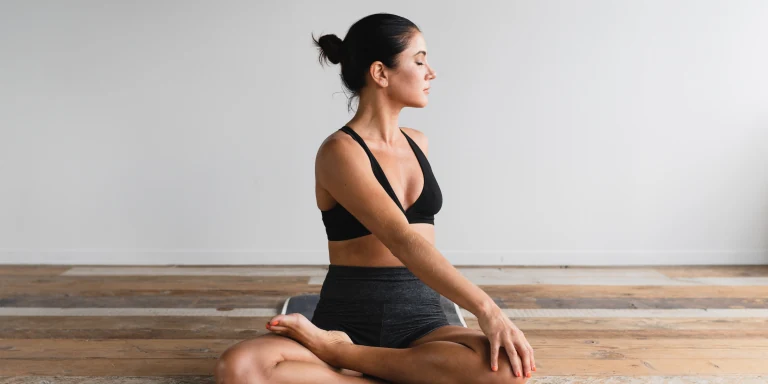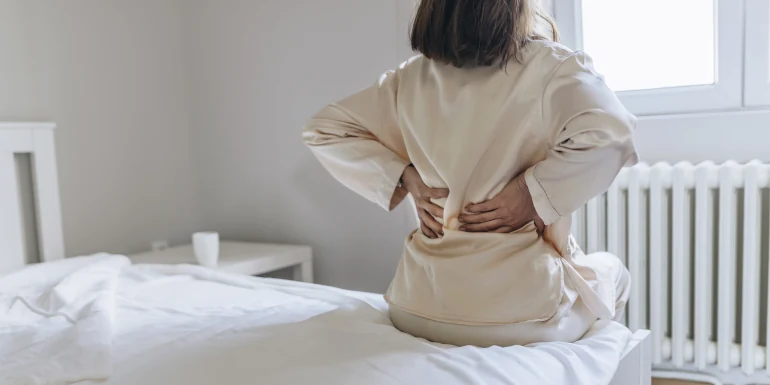
Yoga: things you should know
Yoga calms the mind using various techniques, one of which is physical exercises (asanas). These exercises promote inner peace and balance, while also improving physical strength and flexibility.
Yoga is a system of Indian philosophical teaching which dates back over 3,000 years. It is anchored in Indian tradition and spirituality. The purpose of yoga in the original sense is self-discovery and self-awareness. It aims to harmonise body and mind, creating unity between the self and the world.
Nowadays, yoga is geared towards modern needs and focuses on physical exercises. Many of us spend our whole day sitting at a desk and suffer from stress, so often we feel the need for stress relief, exercise, concentration and inner peace. Yoga exercises can improve your balance – physically, emotionally and mentally. Breathing exercises and meditation are an integral part of holistic yoga practice.
A guide to the eightfold path of yoga
- Yama: Interaction with the world, general codes of behaviour and discipline
- Niyama: Interaction with yourself, self-discipline and wisdom, how you should live your life
- Asana: Postures
- Pranayama: Breathing techniques
- Pratyahara: Withdrawal into own mind, allowing more intensive perception with the senses
- Dharma: Concentration
- Dhyana: Meditation, turning focus inwards
- Samadhi: Enlightenment, a state of detachment
Yoga: now available through the Helsana Coach app
The Helsana Coach app will help you achieve your personal health goals. In the Helsana Coach app you will now find lots of information about yoga and yoga exercises.
What effect does yoga have?
Many studies have confirmed the positive effects of yoga.
- Yoga improves physical posture.
- The exercises relieve and prevent back problems, and also release tension in the neck and shoulders.
- Yoga has an effect on the parasympathetic nervous system which helps us to relax after a period of tension. It reduces our stress levels and we can concentrate better.
- Regular yoga improves the quality of our sleep, giving us more energy and making us feel more vigorous. This in turn increases our general well-being and quality of life.
- Yoga also has a positive effect on our mental health. We gain in self-confidence and feel more stable, secure and calm - even when faced with challenging situations.
Who is yoga suitable for?
Yoga is suitable for people of all ages, and anyone can start learning it at any time. There are different styles of yoga suited to different needs and situations.
If you have any injuries (particularly back injuries), joint problems or serious health conditions, you should exercise caution. Consult your doctor and inform your yoga teacher of any potential limitations.
Pregnant women should not take up yoga in their first trimester if they have not previously practised yoga on a regular basis.
Different styles of yoga
Yoga can be practised in many different ways. Find the style that suits you best. The following are some of the most well-known styles:
Hatha yoga is the best-known style of yoga. It is perfect for beginners. A single yoga session will include asanas, sequences of movements, breathing exercises, mental relaxation techniques and meditation. Many other styles have developed from the teachings of hatha yoga.
Ashtanga yoga is a dynamic, powerful form of hatha yoga. It consists of six predefined sequences of postures. These postures flow from one to the next, and the sequences are repeated. Ashtanga yoga is particularly suited to more advanced practitioners as it is very dynamic and physically demanding.
In vinyasa yoga, movements and breathing are synchronised. This challenges the body and calms the mind. Traditional asanas are combined in different ways to form new sequences of movements, creating a more intensive, flowing style.
Bikram yoga is performed in a very warm room. The high temperatures mean your muscles loosen up more and you sweat a great deal. There are a total of 26 exercises in the Bikram style of yoga.
Yin yoga is a meditative, reflective style of yoga. You hold the asanas (seated or lying down) for a longer period of time. Yin yoga as a concept consists of postures derived from traditional hatha yoga and supplemented with other influences such as traditional Indian yoga.
What do you need to do yoga?
You will need a yoga mat or an exercise mat. Make sure that it is not too thick. That way, you will have better grip and will be able to achieve more stable poses. It is important that the mat is non-slip. You might like to have a blanket ready for relaxation at the end.
Yoga is generally performed barefoot so you don’t slip and have better contact with the floor. Wear comfortable, stretchy clothing. Normal sportswear is ideal.
For certain sessions you will need a yoga block or a yoga strap. However, these can be easily substituted with everyday objects such as books or towels.
Tips for beginners
- It is very important that your technique and execution are correct For your first few sessions, you should seek support from a yoga teacher. Videos can also help.
- Start with simple exercises. Allow enough time for this.
- Practise the different asanas individually.
- Accept your own limits of flexibility and strength, and do not compare yourself to others.

Evelyne Dürr (Msc in Human Movement Sciences, ETH; CAS workplace health promotion) joined Helsana in 2014. As a health management specialist, she helps customers engage with prevention and health promotion. Evelyne Dürr gave the editorial team advice and input for this article.



Newsletter
Find out more about current health issues every month and get all the information you need about our attractive offers from all Helsana Group companies * delivered by e-mail to read whenever it suits you. Our newsletter is free of charge and you can sign up here:
We did not receive your information. Please try again later.
* The Helsana Group comprises Helsana Insurance Company Ltd, Helsana Supplementary Insurances Ltd and Helsana Accidents Ltd.
